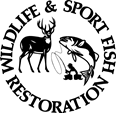Lake Raven 2020 Survey Report  (PDF 1.6 MB)
(PDF 1.6 MB)
If you have difficulty accessing the information in this document, contact the TPWD Inland Fisheries Division for assistance.
Lake Raven - 2020 Survey Report
Prepared by Alice Best and Niki Ragan-Harbison
Inland Fisheries Division
College Station/Houston District, Snook, Texas
This is the authors' summary from a 40-page report. For a copy of the complete report, use the download link in the sidebar.
Fish populations in Lake Raven were surveyed in 2018 and 2020 using electrofishing and in 2020 and 2021 using tandem hoop netting. Anglers were surveyed from March through May in both 2018 and 2021 with a roving creel survey. Historical data are presented with the 2018-2021 data for comparison. This report summarizes the results of the surveys and contains a management plan for the reservoir based on those findings.
Reservoir Description
Lake Raven is a 203-acre reservoir located in Huntsville State Park. The reservoir was repaired and re-impounded in 1956 by the Texas Parks & Wildlife Department for recreational use.
Management History
Lake Raven has a history of producing trophy Largemouth Bass. The population was managed with a catch-and-release regulation from September 1996 until September 2018 when the regulation changed to a 16-inch maximum with a 5 fish bag limit. The regulation allows the angler to retain Largemouth Bass measuring > 24 inches for weighing in the Huntsville State Park and subsequent release or, if weighing 13 pounds or more, donation into the Toyota ShareLunker Program. Lake Raven was included in Operation World Record (OWR) from 2006-2016, a research project designed to compare growth of selectively bred ShareLunker Largemouth Bass fingerlings to resident bass fingerlings and received preferential stocking under the program for several years.
Alligator weed, hydrilla, giant salvinia, and water hyacinth have all impeded access and degraded habitat to varying degrees at different times and have been managed with an integrated pest management plan including use of herbicides, biological control (Grass Carp, hydrilla flies, and alligator weed flea beetles), and manual removal.
Fish Community
- Prey species: Threadfin Shad were present in the reservoir. Electrofishing catch of Gizzard Shad was very low, and none were available as prey to sport fish. Electrofishing catch was high for Bluegill and moderate for Redear Sunfish. Most sunfish were under 6 inches in length and available as prey to most sport fish.
- Catfishes: The Channel Catfish population has increased due to stocking efforts in recent years, but angler effort and harvest were both low compared to the 2018 creel survey.
- Largemouth Bass: Largemouth Bass were abundant with the majority available to anglers for harvest. Largemouth Bass had adequate growth (average age at 16 inches was 4.14 years) and good body condition (mean relative weight of 85 or more). They were the most targeted species, as 40% of all anglers at Lake Raven fished for Largemouth Bass.
- Crappie: Black Crappie and White Crappie were present in the reservoir with legal-size fish available and harvested by anglers.
Management Strategies
- Largemouth Bass will continue to be managed for big fish potential with a 16-inch maximum length limit and annual stockings of Florida Largemouth Bass.
- Assessment of efforts to establish an adult Channel Catfish population will continue.
- Continue to implement strategies to improve the aquatic vegetation community including native vegetation plantings and control efforts of invasive exotic species to improve bank access.

Performance Report as required by Federal Aid in Sport Fish Restoration Act Texas Federal Aid Project F-221-M-2 Inland Fisheries Division Monitoring and Management Program